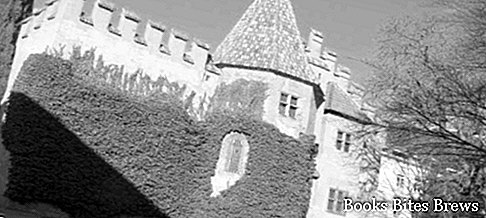What to see in Merano, one-day itinerary including the main monuments and places of interest, including the Duomo San Nicolò, the princely castle, Via dei Portici, a winter walk and a summer walk.
Tourist information
Located in a large basin, near the point where the waters of the Passirio flow into the Adige river, Merano is the second largest city in South Tyrol.
The first inhabited center dates back to the castrum built by the Romans along the road that led to the Resia Pass.
In medieval times, Merania, as it was called at that time, belonged to the princes-bishops of Trento and was given as a fief to the Counts of Tyrol, who elected it as the capital of their territories, thus increasing its development.
In the thirteenth century it formed an important artisan and mercantile center, where an important mint was active.
In 1420 a period of decline began, coinciding with the passage to Innsbruck of the role of capital of Tyrol.
Due to internal struggles, invasions and catastrophes, as well as the Bavarian domination that occurred in the early nineteenth century, the patience of the Tyroleans ceased, leading to the pro-Austrian revolt led by Andreas Hofer in 1809, thanks to which the town returned to its jurisdiction Austrian in 1814, starting a new development that made it a very popular climatic health resort.
The Cathedral of Merano, built in Gothic style between the fourteenth and fifteenth centuries, has a bell tower of considerable height, from the top of which it is possible to have a magnificent view of the medieval core of the city.
The cathedral, dedicated to San Nicolò, has an original façade, with a rose window and an ogival-shaped portal below, while the right side, which is distinguished by the presence of two remarkable portals, is decorated with statues and frescoes.
The three-nave interior contains the effigies of the Twelve Apostles, a nineteenth-century work by the Austrian sculptor Pendl.
What see
In the rear area, compared to the apse of the cathedral, there is the Church of Santa Barbara, a Gothic building of the fifteenth century with an octagonal plan, inside which there is an altar made of wood in the fifteenth century.
Recommended readings- Trentino Alto Adige: Sunday day trips
- Val di Fassa (Trentino): excursions
- Val Pusteria (South Tyrol): what to see
- Dolomites (tourism): where the enchanting peaks are located
- Ortisei (South Tyrol): what to see
Next to the church, in the Steiner museum, paintings and statues are exhibited.
Via dei Portici, which constitutes the main street of the ancient city, is lined with arcades of reduced height, under which there are various shops.
The princely castle, located in the center, is an evocative noble residence, which is the result of a reworking carried out during the fifteenth century by Sigismund of Austria.
The internal courtyard, with reduced dimensions and late-Gothic decorations, leads to a series of rooms characterized by interesting wooden paneling, period furniture and objects.
In the music room, musical instruments can be viewed, in the Emperor's room, where Massimiliano I was hosted, there are frescoes and a tiled stove having generous dimensions, while in the game room there is a sixteenth century calendar made in typographies French.
The civic museum displays collections of archeology, mineralogy and ceramics, as well as paintings by Tyrolean artists and Gothic sculptures.
The modern district of the city develops from the right bank of the river, called Passeggiata lungo Passirio, up to the two suburbs of Maia Alta and Maia Bassa.
With the presence of numerous and beautiful gardens, as well as elegant neoclassical and liberty buildings, this area constitutes the most suggestive part of Merano, where the Winter Walk and the Summer Walk are located.




